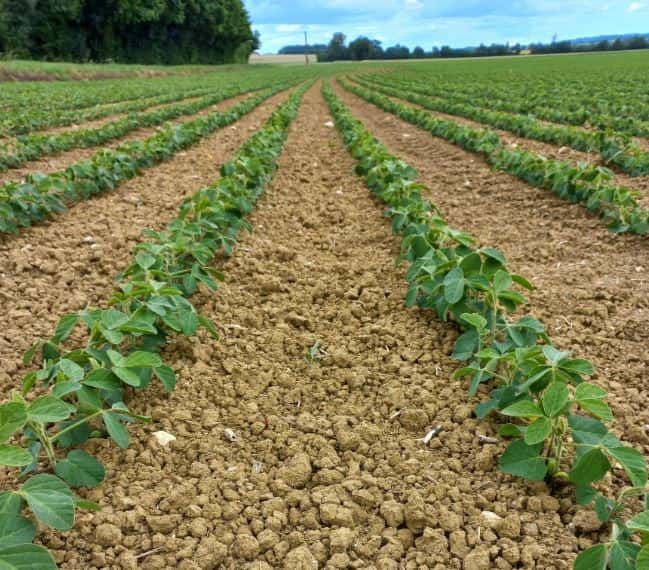WEED CONTROL
OBJECTIVE: Prevent weed development

- Controlling weeds on plots is a key issue. Indeed, soybean is a plant that covers the soil slowly and certain weeds can affect productivity and the quality of the harvest. There are several ways to control weeds:
- First, crop rotation can break the cycle of certain weeds by alternating spring crops and autumn crops.
- Soil preparation techniques can also influence the presence of weeds. Ploughing and the stale seed bed method can reduce weed seed stocks.
- Finally, there are chemical (post sowing, pre and postemergence)
and mechanical solutions to eliminate weeds.
- As some varieties are sensitive and may show signs of phytotoxicity, the following recommendations should be followed:
- Metobromuron: to avoid lack of selectivity, never spray more than 4 days after sowing and adapt the dosage to the soil composition. Molecule recommended for Ambrosia.
- Pendimethalin: a lack of selectivity can occur especially in sandy soils.
- Pulsar 40®: in cases of heavy rain, high temperature or excessive plant development, yellow marks may appear but they disappear quickly.
- Be careful: Pulsar® and CORUM® can cause molecules from previously used herbicide to be released from the sprayer and filter, leading to soybean phytotoxicity. Sprayers must be carefully cleaned with suitable products before using Pulsar®.
To find out more, download our soybean technical guide: click here.
